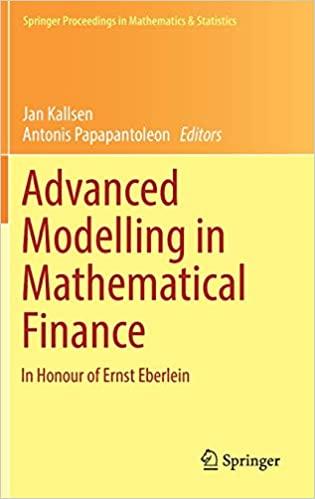Answered step by step
Verified Expert Solution
Question
1 Approved Answer
Hey can someone do a financial analysis on the following information? The objective is to decide whether or not a mining train station should use
Hey can someone do a financial analysis on the following information?
The objective is to decide whether or not a mining train station should use automated trains or trains with drivers (which one will cost less)
| Blue Mountain Mining | ||
| Information Sheet | ||
| General Information | Amounts | Notes |
| Iron ore reserve (tonnes) | 900,000,000 | |
| Annual production (tonnes) | 30,000,000 | |
| Life of mine (years) | 30 | |
| Distance from mine to port (kilometres) | 240 | Round trip is 480 kilometres |
| Trains in operation | 3 | Each train comprises locomotives and carriages |
| Locomotives per train | 2 | |
| Carriages per train | 208 | |
| Fuel usage per train (litres per kilometre) | 8 | Averaged over round trip |
| Fuel cost ($ per litre) | 1.40 | |
| Effective operating days per year | 360 | Used to adjust for maintenance and breakdowns |
| Tax rate | 30% | Tax is paid in the year of income |
| Discount rate After Tax | 10% | Applies to non-automated and automated options |
| Information on Locomotives (per locomotive) | ||
| Initial outlay ($) | 2,500,000 | Mine uses MD4400AC trains |
| Life of locomotive (years) | 15 | Operative life is shorter than average due to continued operation of trains and load requirements |
| Working capital ($) | 500,000 | Fuel, spare parts and related materials |
| Maintenance costs per year ($) | 200,000 | |
| Depreciation method | Straight Line | Rate = 1/Locomotive Life |
| Salvage value at end of year 15 ($) | 0.00 | Mine location and associated costs effectively make locomotives no salvageable |
| Information on Drivers | ||
| Drivers required (per train, per day) | 4 | Two drivers operate each train. |
| Work hours (per driver, per day) | 12 | Each shift covers the trip from the mine to the port or from the port to the mine. |
| Driver's weekly working hours (average) | 42 | Averaged as drivers will work 2 weeks on 2 weeks off. |
| Driver' yearly working weeks | 48 | Net of leave |
| Driver's unavailability due to illness (weeks per year) | 2 | |
| Total Driving Hours (per year, per train) | 51,840 | |
| Total drivers required | 27 | |
| Driver's average annual salary ($) | 220,000 | |
| Information on Automation | ||
| Additional capital outlay to rail line ($) | 35,000,000 | Sensors and related materials, depreciated straight line over life of mine |
| Salvage of additional capital outlay to rail line ($) | 0 | |
| Additional capital outlay to locomotive ($, per locomotive) | 250,000 | Sensors and related materials required for all new locomotives, depreciated straight line over life of locomotive |
| Salvage of additional capital outlay to locomotives ($, per locomotive) | 0 | |
| Additional working capital ($) | 1,000,000 | Total across rail line and all trains |
| Fuel efficiency usage adjustment | 93% | Automation reduces fuel usage as locomotives operate more efficiently, e.g. reduces cost by 7% |
| Maintenance cost adjustment | 95% | Automation reduces maintenance costs through less wear and tear, and breakdowns of locomotives, e.g. reduces cost by 5% |
| Drivers required | 0 | No drivers required due to automation |
| Total automation technicians required | 6 | Additional technicians required to maintain locomotives and rail line |
| Automation technician's average annual salary ($) | 150,000 | |
Step by Step Solution
There are 3 Steps involved in it
Step: 1

Get Instant Access to Expert-Tailored Solutions
See step-by-step solutions with expert insights and AI powered tools for academic success
Step: 2

Step: 3

Ace Your Homework with AI
Get the answers you need in no time with our AI-driven, step-by-step assistance
Get Started


